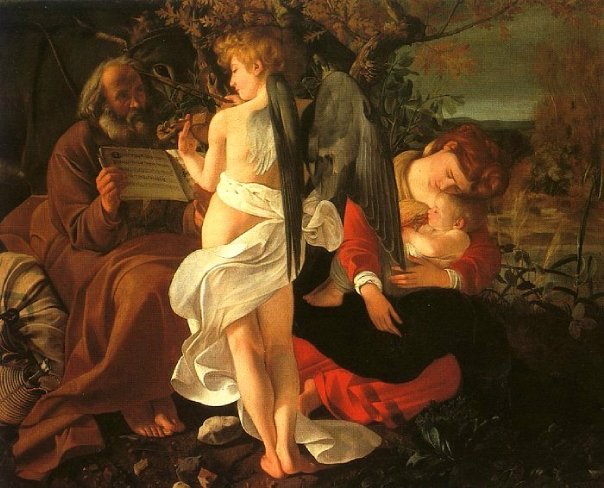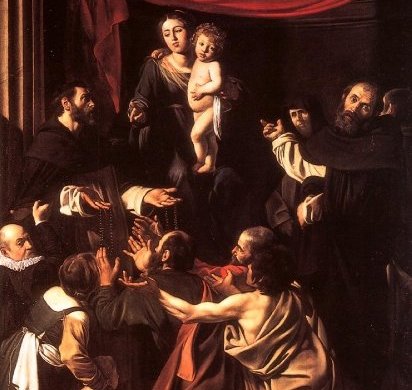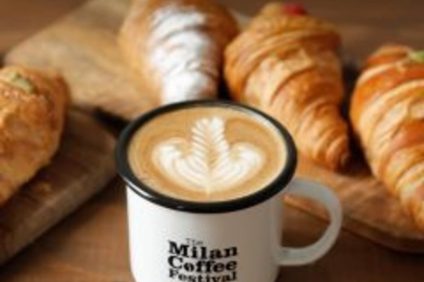He was born on 29 September 1571 Michelangelo Merisi, known as Caravaggio, , a decidedly unusual painter for his time. His soul, restless and rebellious, influenced the art of the seventeenth century, making him a real innovator, the precursor of the Baroque in painting.

Caravaggio was a giant for the time, and remains, even today, among the most brilliant and most loved painters of all time. Unlike his colleagues, who painted according to the classical schemes, he preferred to represent children of the people, religious scenes which seem realistic, flowers and fruits so perfect as to seem real.

Caravaggio's “human” faces
Who, in front of his paintings, has never been fascinated by the extraordinary play of light and shadow, by the modernity of his characters, by the emphasis of the forms, movements and theatricality that characterize them? His subjects are real: their faces scream, invoke, suffer, exude feelings. With him, art opens up to realism, to the psychology of the character, clearing itself of the canons of the past. Caravaggio can well define himself as a free artist, in life and in art.

The artistic training
Michelangelo Merisi was born in Milan, from Fermo and Lucia Aratori, both from Caravaggio (Bergamo). In 1577 the family left Milan to escape the plague. After the epidemic, at the age of 13, the very young Merisi returns to work in the workshop of Simone Peterzano, painter of Lombard mannerism, and remained here for four years. Between 1595 and 1596 he entered the Roman artistic environment, where he met the painter from Messina Lorenzo Carli.

In his shop, in via della Scrofa, Caravaggio found work and stay. Thanks to Carli, he frequents the Sicilian Mario Minniti, who becomes one of his closest friends. After leaving Carli's workshop, the artist has a brief association with Antiveduto Gramatica, and attended, for a few months, the laboratory of Giuseppe Cesari, called the Cavalier d'Arpino, one of the greatest exponents of late Mannerism.
An art that shakes the salons of the high nobility
In 1597 he knows the cardinal Francesco Maria del Monte, a man of culture and art lover who, enchanted by his painting, buys some of his paintings. Caravaggio enters his service and remains there for about three years. From this moment on, his fame began to increase in the salons of the Roman high nobility, who were shaken by his revolutionary painting. Soon his works found themselves at the center of heated discussions and controversies.

Thanks to the commissions of Cardinal del Monte, Caravaggio changes his style: he abandons small canvases and single portraits and begins to create complex works. One of the first works of this period is the "Rest on the flight to Egypt". In a few years, Merisi became a living myth for an entire generation of painters.
The naked reality, between lights and shadows
His paintings reflect naked reality, underlined by very precise outlines and strong contrasts of light and shadow that make him the great discoverer of realism. Painting, thanks to Caravaggio, externalizes the drama, the tragedy, the scent of reality, even the violent one. This new vision of art is fully expressed in the canvases that he painted between 1599 and 1602 for the Contarelli chapel, in the church of San Luigi dei Francesi in Rome: the "Vocation of St. Matthew" and "Martyrdom".

In less than a year the painter completed the two works that opened the doors to success for him. Francesco Contarelli, grandson or illegitimate son of Matteo Contarelli, in 1602 commissioned him a third canvas for the same church: "St. Matthew and the angel". The work is painted in two versions. The first is rejected: the saint's pose is considered vulgar. Here, as in the "Crucifixion of St. Peter" and in "Conversion of Saint Paul", the play of contrasts between light and shadow are crucial: the light creates the space, highlights the figures to the point of molding them, generates an atmosphere of almost palpable drama.
Caravaggio, tormented in art and in life
Caravaggio is involved in numerous fights and is also arrested several times. On the evening of May 28, 1606, the most serious episode took place: the murder of that man in Campo Marzio Ranuccio Tomassoni. For this crime he is condemned to be beheaded and must leave Rome. Prince Filippo I Colonna he helps him escape, offering him asylum in one of his Lazio fiefdoms.

He then goes to Naples, where he paints other great masterpieces such as the "Madonna of the Rosary". In 1607 he moved to Malta, but even from here his quarrelsome character forced him to flee, first to Syracuse, then to Messina and Palermo. In all these stages he continues to paint extraordinary works. Back in Naples, towards the end of 1609, he receives the news from Rome that Pope Paul V is preparing a revocation of the death sentence. From Naples he set out, in July 1610, with a felucca-ferry which, every week, sails towards Porto Ercole. It is secretly headed to the port of Stake of Ladispoli, in papal territory, not far from Rome.

Death in Porto Ercole
There he awaits the papal amnesty before returning, as a free man, to the Eternal City. But things don't go according to plan. The arrival in Palo di Ladispoli, disregarded by the coastal surveillance, causes his arrest for investigations. The boat, unable to wait, disembarks it and continues its route north, near Porto Ercole, where it was supposed to arrive, but it takes the artist's luggage with it. A piece of baggage, absolutely to be recovered, also containing the price agreed by Merisi with the cardinal Scipione Borghese for his definitive freedom and, in particular, three of his canvases. According to the official version, the Orsini would have offered him a boat to reach Porto Ercole and recover the precious cargo. The artist reaches the town by sea, landing along the Feniglia tombolo beach, but it is not clear if the felucca-ferry was already returning to Naples, with its luggage on board. Very tried and feverish, Caravaggio remained in Porto Ercole treated in the sanatorium of Santa Maria Ausiliatrice. There the July 18 1610. His short and tormented life earned him the nickname of "cursed painter".





